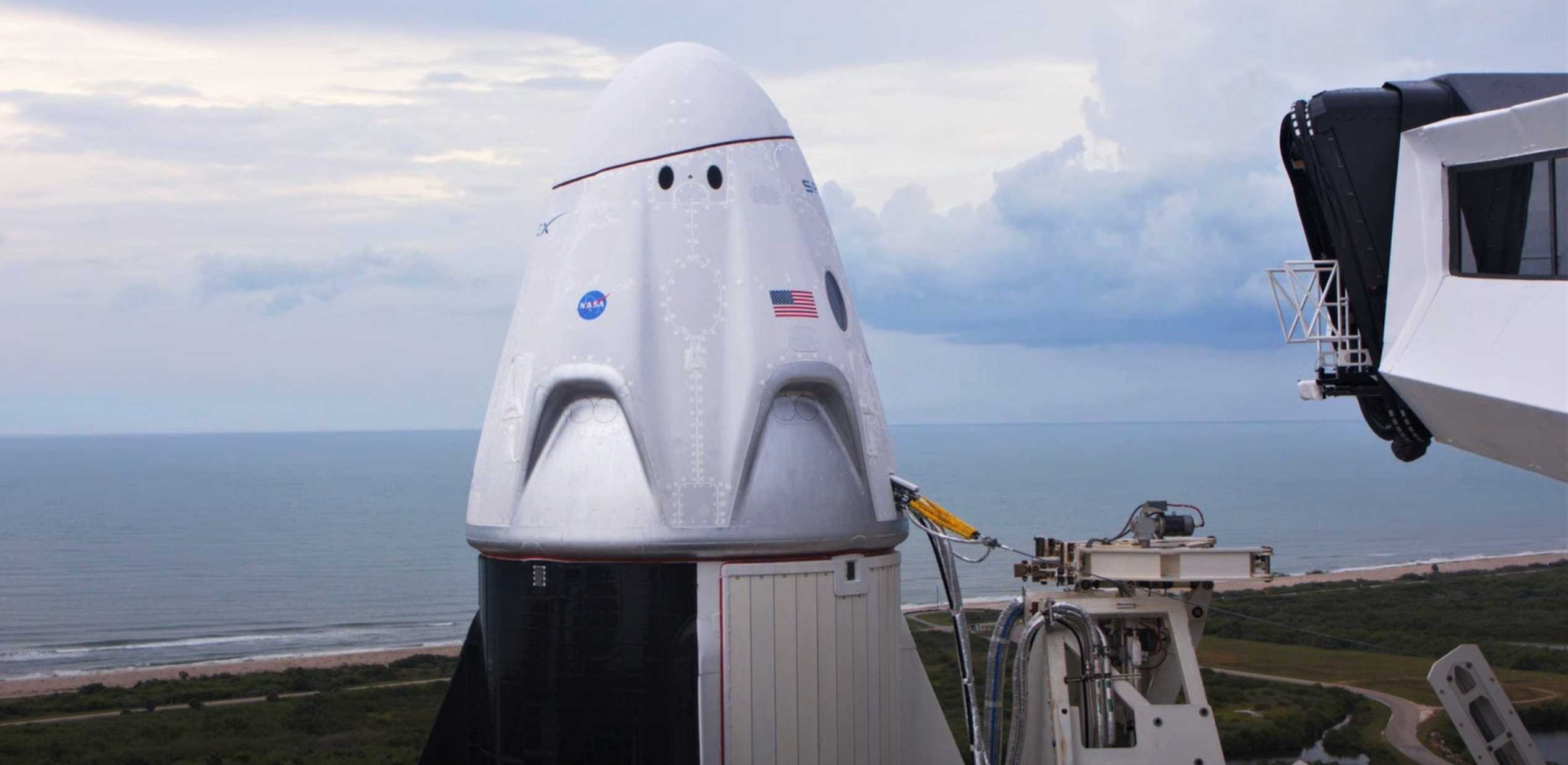
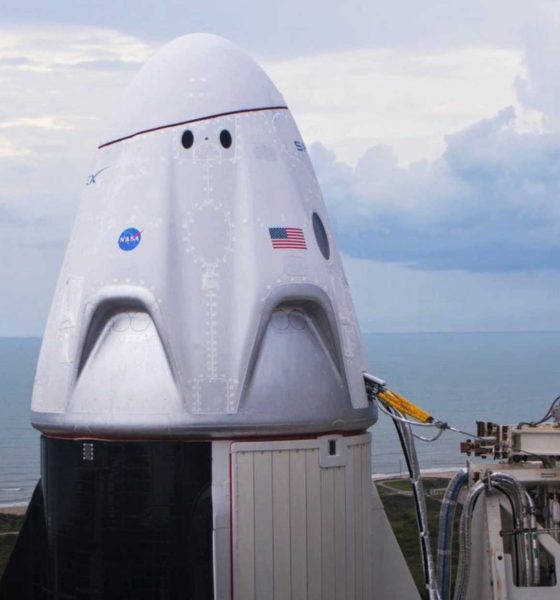
News
SpaceX’s historic NASA astronaut launch debut on track for second attempt
Rather than making history on May 27th, SpaceX’s highest-profile launch ever – Crew Dragon’s NASA astronaut launch debut – was scrubbed just minutes before liftoff by stormy Florida weather. Unfortunately, conditions appear to be even less favorable on Saturday and Sunday backup windows.
Weather trended well, until it didn’t
The day began with launch fans growing increasingly concerned about a system of low-pressure off of Florida’s northeast coast that strengthened into tropical storm Bertha – the second named storm before the official start of the Atlantic basin hurricane season on June 1st. As the day progressed, Bertha became less of a worry for SpaceX recovery and emergency abort drop zones as it moved further north up the coast eventually making landfall in South Carolina. Then the thunderstorms began firing up.
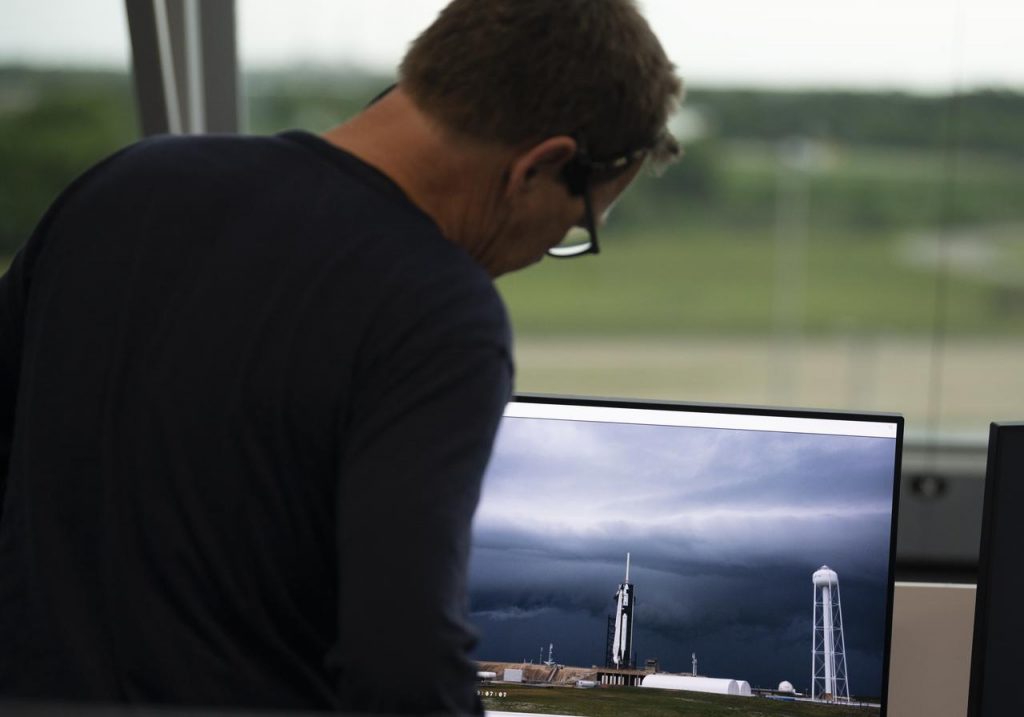
Going into launch day launch weather officer, Mike McAleenan of the U.S. Space Force’s 45th Weather Squadron predicted a 60% chance of favorable launch weather conditions. That decreased slightly to 50% during the morning’s launch weather briefing. The 50/50 shot of Florida weather cooperating to get the launch off during the one-second long launch window opportunity remained the main concern for the rest of the day.
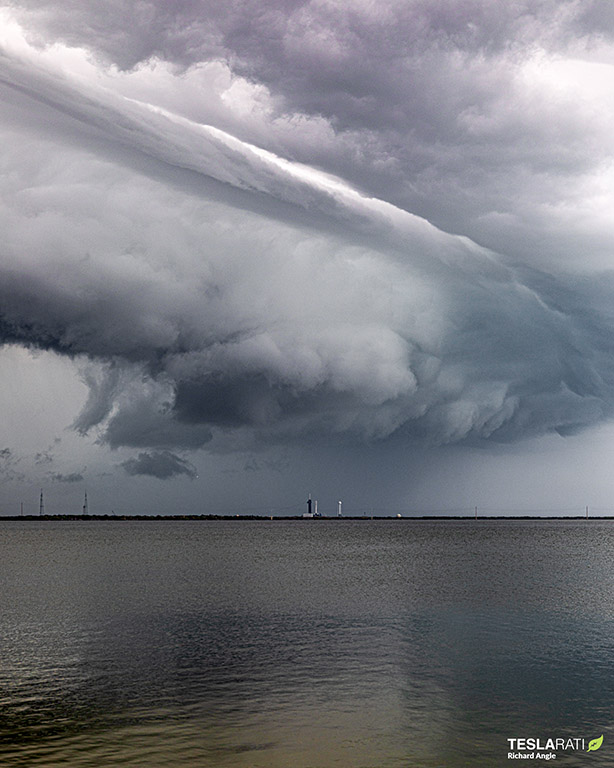
During the final thirty minutes of the countdown, many of the weather constraints that were holding up a green-light for launch from cleared up, but one last weather rule remained no-go. McAleenan stated over the internal weather communication loop during NASA’s live broadcast that if the launch window could’ve extended another 10 minutes, the weather would probably cooperate. This wasn’t the case, though. The launch attempt was ultimately aborted just 14 minutes shy of liftoff due to the “field mill” rule not clearing in time. The lightning field mill rule refers to a sophisticated electrical field system that spans the entire area of Kennedy Space Center and the surrounding area of Cape Canaveral responsible for continuously detecting the electrical charge of the atmosphere.
Protecting rockets from producing lightning
Rockets are not permitted to launch through an electrically charged atmosphere because of the possibility of what is called “triggered” lightning – lightning that is actually produced by a rocket bursting through an electrically charged atmosphere. Sending a rocket through an already unstable atmosphere can cause a disturbance, a lightning bolt, to be triggered. This phenomenon has the capability of being potentially dangerous for the rocket and, more importantly in this case, the occupants on board.
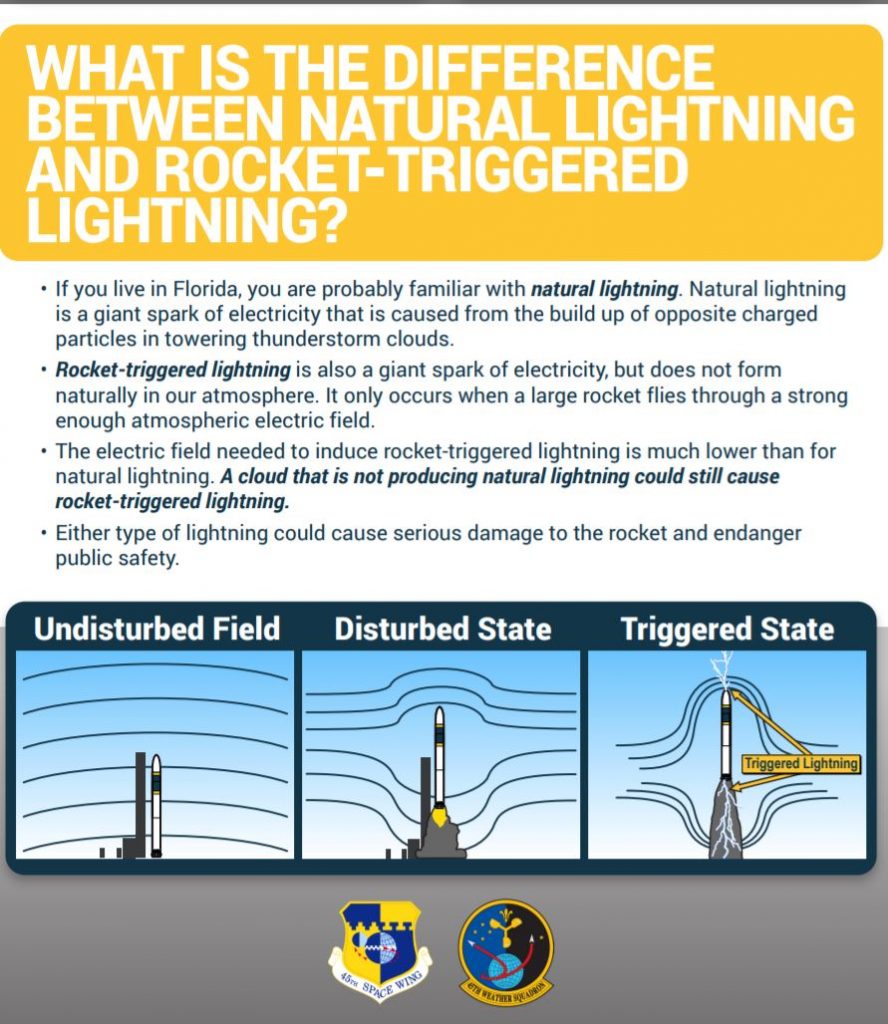
Demo-2, Round 2
Following a scrubbed first attempt, the 45th Weather Squadron released the L-3 (3 days until launch) forecast for the second attempt to send NASA astronauts Doug Hurley and Bob Behnken to the International Space Station. The prediction looked much like the one going into Wednesday’s attempt. On Thursday morning, May 28th, a new L-2 (2 days until launch) forecast was released showing very little change from the evening before.
SpaceX’s next attempt at a Demo-2 launch will occur on Saturday, May 30th, at 3:22:41pm EDT with another backup attempt scheduled for Sunday, May 31st at 3:00:07pm EDT. The outlook for the weather, however, looks much the same as it did for Wednesday. The 45th Weather Squadron is currently predicting only a 40% chance of favorable launching conditions on both days, and that’s just for the weather directly over LC-39A at the time of launch.
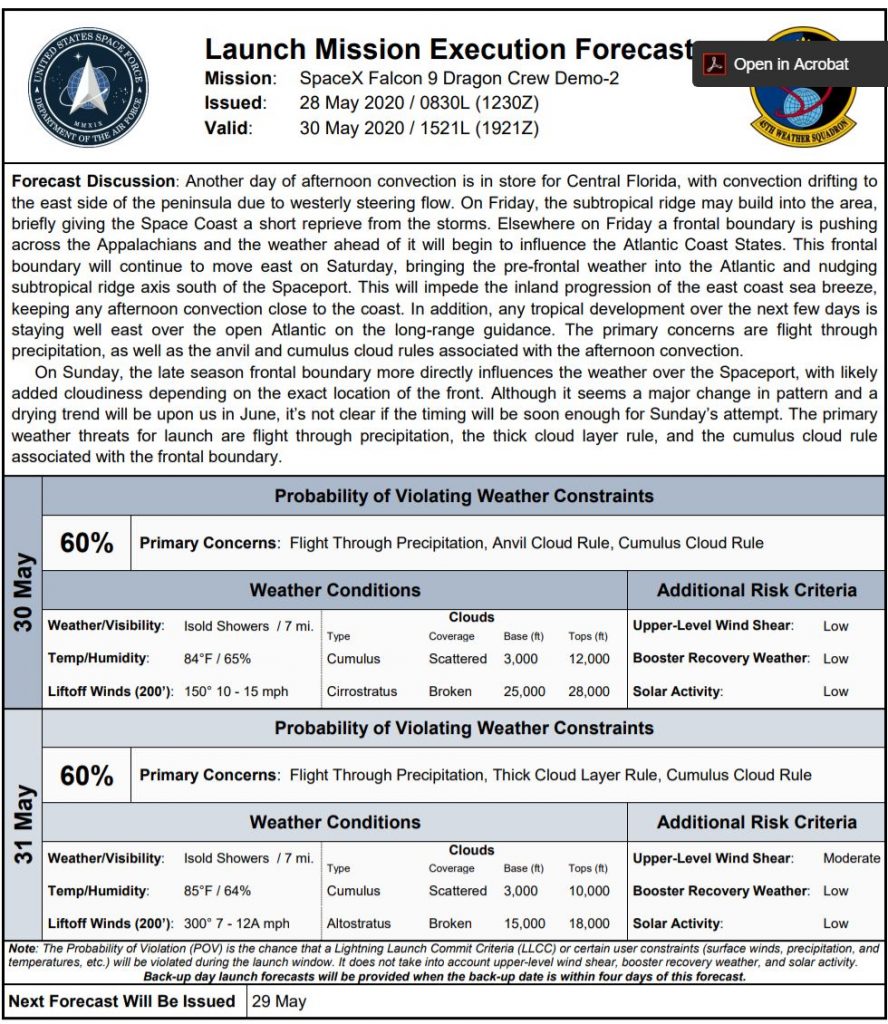
The 45th Weather Squadron does not predict other conditions that can determine a scrub of launch including upper-level atmospheric winds capable of completely sheering apart a rocket at altitude, or weather conditions for booster recovery and the recovery zones needed to rescue the Dragon capsule in the event of an emergency abort scenario. SpaceX has its own team of professionals that work in tandem with the 45th Weather Squadron to monitor the conditions of the recovery and abort zones. SpaceX takes things into consideration like wave height and patterns to determine whether or not conditions are appropriate enough for crews to perform any and all recovery operations that may be needed.
For Saturday’s attempt, the SpaceX Demo-2 will once again face the challenges of precipitation and dangerous lightning producing anvil and cumulus clouds. Expect launch day to look much like it did during the first attempt on Wednesday. SpaceX will need to thread one seriously precise needle to pull off the most historic rocket launch in company history.
Check out Teslarati’s newsletters for prompt updates, on-the-ground perspectives, and unique glimpses of SpaceX’s rocket launch and recovery processes.

News
Tesla (TSLA) receives “Buy” rating and $551 PT from Canaccord Genuity
He also maintained a “Buy” rating for TSLA stock over the company’s improving long-term outlook, which is driven by autonomy and robotics.

Canaccord Genuity analyst George Gianarikas raised his Tesla (NASDAQ:TSLA) price target from $482 to $551. He also maintained a “Buy” rating for TSLA stock over the company’s improving long-term outlook, which is driven by autonomy and robotics.
The analyst’s updated note
Gianarikas lowered his 4Q25 delivery estimates but pointed to several positive factors in the Tesla story. He noted that EV adoption in emerging markets is gaining pace, and progress in FSD and the Robotaxi rollout in 2026 represent major upside drivers. Further progress in the Optimus program next year could also add more momentum for the electric vehicle maker.
“Overall, yes, 4Q25 delivery expectations are being revised lower. However, the reset in the US EV market is laying the groundwork for a more durable and attractive long-term demand environment.
“At the same time, EV penetration in emerging markets is accelerating, reinforcing Tesla’s potential multi‑year growth runway beyond the US. Global progress in FSD and the anticipated rollout of a larger robotaxi fleet in 2026 are increasingly important components of the Tesla equity story and could provide sentiment tailwinds,” the analyst wrote.
Tesla’s busy 2026
The upcoming year would be a busy one for Tesla, considering the company’s plans and targets. The autonomous two-seat Cybercab has been confirmed to start production sometime in Q2 2026, as per Elon Musk during the 2025 Annual Shareholder Meeting.
Apart from this, Tesla is also expected to unveil the next-generation Roadster on April 1, 2026. Tesla is also expected to start high-volume production of the Tesla Semi in Nevada next year.
Apart from vehicle launches, Tesla has expressed its intentions to significantly ramp the rollout of FSD to several regions worldwide, such as Europe. Plans are also underway to launch more Robotaxi networks in several more key areas across the United States.
News
Waymo sues Santa Monica over order to halt overnight charging sessions
In its complaint, Waymo argued that its self-driving cars’ operations do not constitute a public nuisance, and compliance with the city’s order would cause the company irreparable harm.

Waymo has filed a lawsuit against the City of Santa Monica in Los Angeles County Superior Court, seeking to block an order that requires the company to cease overnight charging at two facilities.
In its complaint, Waymo argued that its self-driving cars’ operations do not constitute a public nuisance, and compliance with the city’s order would cause the company irreparable harm.
Nuisance claims
As noted in a report from the Los Angeles Times, Waymo’s two charging sites at Euclid Street and Broadway have operated for about a year, supporting the company’s growing fleet with round-the-clock activity. Unfortunately, this has also resulted in residents in the area reportedly being unable to sleep due to incessant beeping from self-driving taxis that are moving in and out of the charging stations around the clock.
Frustrated residents have protested against the Waymos by blocking the vehicles’ paths, placing cones, and “stacking” cars to create backups. This has also resulted in multiple calls to the police.
Last month, the city issued an order to Waymo and its charging partner, Voltera, to cease overnight operations at the charging locations, stating that the self-driving vehicles’ activities at night were a public nuisance. A December 15 meeting yielded no agreement on mitigations like software rerouting. Waymo proposed changes, but the city reportedly insisted that nothing would satisfy the irate residents.
“We are disappointed that the City has chosen an adversarial path over a collaborative one. The City’s position has been to insist that no actions taken or proposed by Waymo would satisfy the complaining neighbors and therefore must be deemed insufficient,” a Waymo spokesperson stated.
Waymo pushes back
In its legal complaint, Waymo stated that its “activities at the Broadway Facilities do not constitute a public nuisance.” The company also noted that it “faces imminent and irreparable harm to its operations, employees, and customers” from the city’s order. The suit also stated that the city was fully aware that the Voltera charging sites would be operating around the clock to support Waymo’s self-driving taxis.
The company highlighted over one million trips in Santa Monica since launch, with more than 50,000 rides starting or ending there in November alone. Waymo also criticized the city for adopting a contentious strategy against businesses.
“The City of Santa Monica’s recent actions are inconsistent with its stated goal of attracting investment. At a time when the City faces a serious fiscal crisis, officials are choosing to obstruct properly permitted investment rather than fostering a ‘ready for business’ environment,” Waymo stated.
News
Tesla FSD v14.2.2 is getting rave reviews from drivers
So far, early testers have reported buttery-smooth drives with confident performance, even at night or on twisty roads.

Tesla Full Self-Driving (Supervised) v14.2.2 is receiving positive reviews from owners, with several drivers praising the build’s lack of hesitation during lane changes and its smoother decision-making, among others.
The update, which started rolling out on Monday, also adds features like dynamic arrival pin adjustment. So far, early testers have reported buttery-smooth drives with confident performance, even at night or on twisty roads.
Owners highlight major improvements
Longtime Tesla owner and FSD user @BLKMDL3 shared a detailed 10-hour impression of FSD v14.2.2, noting that the system exhibited “zero lane change hesitation” and “extremely refined” lane choices. He praised Mad Max mode’s performance, stellar parking in locations including ticket dispensers, and impressive canyon runs even in dark conditions.
Fellow FSD user Dan Burkland reported an hour of FSD v14.2.2’s nighttime driving with “zero hesitations” and “buttery smooth” confidence reminiscent of Robotaxi rides in areas such as Austin, Texas. Veteran FSD user Whole Mars Catalog also demonstrated voice navigation via Grok, while Tesla owner Devin Olsen completed a nearly two-hour drive with FSD v14.2.2 in heavy traffic and rain with strong performance.
Closer to unsupervised
FSD has been receiving rave reviews, even from Tesla’s competitors. Xpeng CEO He Xiaopeng, for one, offered fresh praise for FSD v14.2 after visiting Silicon Valley. Following extended test drives of Tesla vehicles running the latest FSD software, He stated that the system has made major strides, reinforcing his view that Tesla’s approach to autonomy is indeed the proper path towards autonomy.
According to He, Tesla’s FSD has evolved from a smooth Level 2 advanced driver assistance system into what he described as a “near-Level 4” experience in terms of capabilities. While acknowledging that areas of improvement are still present, the Xpeng CEO stated that FSD’s current iteration significantly surpasses last year’s capabilities. He also reiterated his belief that Tesla’s strategy of using the same autonomous software and hardware architecture across private vehicles and robotaxis is the right long-term approach, as it would allow users to bypass intermediate autonomy stages and move closer to Level 4 functionality.








